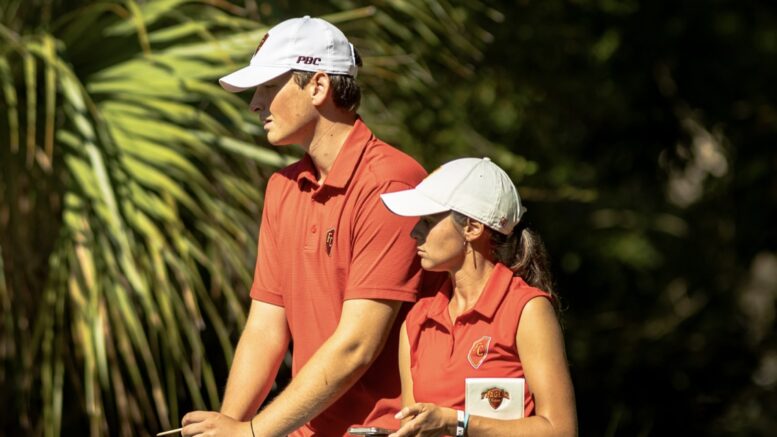By Clair Buri
When Roo Fenwick moved from Scotland to the United States two years ago to play golf, he didn’t expect his favorite sport to feel so different. He was especially surprised by the strong focus on teamwork.
“It definitely is a team environment here; I didn’t expect it to be,” said Fenwick, who is now a senior at Flagler College.
After a brief stay in Illinois, Fenwick decided to transfer to Saint Augustine, Florida.
“I always wanted to move away from home, and playing golf in the U.S. was the perfect opportunity for me,” he said.
For international athletes like Fenwick, coming to the U.S. to play sports means adapting to a system that often places more emphasis on teamwork.
While, in the U.S., athletes play for teams associated with their high schools and colleges, in Europe, athletes typically follow a different path. Since sports play a minimal role in European schools, the only option to pursue athletics is by joining a club. This fundamental difference becomes apparent for European athletes when transitioning to an American college or university.
At Flagler College, this team-oriented approach is especially evident—even in sports like golf, which most people wouldn’t consider a team sport. Team performance takes center stage: the scores of all players are combined to calculate the team’s overall result.
“In the end, it’s Flagler College against other colleges,” Fenwick said.
This shift from individual achievement to teamwork reflects a broader trend across college sports in the U.S. A 2019 study exploring the experiences of European athletes transitioning to the U.S. highlighted how this approach often challenges personal development. Many athletes noted that college coaches in the U.S. prioritize winning over the individual growth of players.
One male soccer player explained: “The sole focus here is winning games, not developing players. In the U.S., coaches are still happy to win, even when it was a bad win and the team played poorly. They don’t care if we play badly, as long as the record is good.”
The same concept applies to the tennis team. Vinzenz Wutzl, a freshman from Austria, explains how this differs from his home country.
“In Austria, everyone plays for themselves; here, the focus is on the team,” Wutzl said.
While the emphasis on team success can be challenging, this dynamic isn’t necessarily a drawback for Wutzl; rather, it’s quite the contrary. The close-knit team environment not only enhances athletic collaboration but also facilitates social integration.
For international students, starting college in the U.S. often comes with challenges. Florida’s humid and hot weather is unfamiliar to many Europeans, and the daily pressure to perform can initially be overwhelming. During these moments, the value of being a part of a team becomes clear.
Joining a team helps students adjust to new circumstances and creates an environment where they can feel at home more quickly. Sports teams ease the transition for many students, not just those abroad.
“Living with your teammates definitely makes it easier to make friends,” Wutzl said.
This sense of support and community extends beyond individual teams. Athletes from various sports often form strong connections as well.
“I’m good friends with many people on the tennis team and the soccer team,” Fenwick said.
The Association for Applied Sport Psychology (AASP) describes this process of integration as “shared acculturation.” This means that while international athletes adapt to a new culture, teammates and coaches also show interest in their backgrounds and engage in activities that promote cultural exchange.
“Shared acculturation means that the immigrant athlete must engage in attempts to adapt to the new culture while teammates and coaches must also show interest in the international athlete’s culture and engage in activities that promote intercultural exchange,” AASP states.
This mutual exchange allows for a healthy transition and the opportunity to foster deep connections with the team. Another advantage of the team-oriented approach is the mutual motivation it fosters.
“I prefer playing as part of a team. That way, you can motivate each other,” Wutzl said.
Shared success not only strengthens team bonds but also supports the personal growth of each athlete.
Whether on the golf course or the tennis court, team spirit is evident in all sports at Flagler College, even if it might not be obvious at first glance.
While some argue that prioritizing teamwork could hinder the individual growth of athletes, it plays a crucial role in helping international students forge connections, build friendships, and find a sense of belonging in a new environment. What starts as a sporting challenge evolves into a lifelong skill far beyond athletics.




Be the first to comment on "Changing the Game: How U.S. College Sports Transform International Athletes"